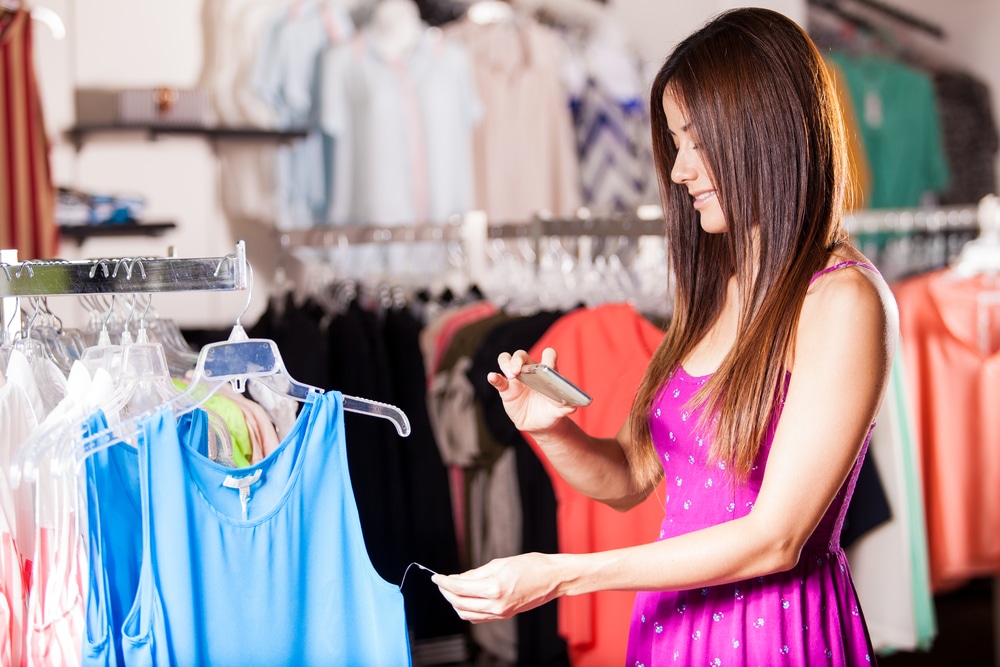The most effective immersive brand experiences are driven by digital technology—more specifically, mobile technology. Smartphones are an extension of the Internet and social media, but in a retail sense, they are also a tool that offers brands and retailers an opportunity to cater to the immediate needs of consumers—whether it is through augmented reality or personalization.
A 2018 survey found that 60.1% of shoppers globally use their smartphones in stores, and 71.6% use their smartphones for shopping in their homes, while traveling or during their free time. And with 44% of consumers expressing a desire to see technology improve their shopping experience, brands and retailers must consider how they can leverage mobile technology to create an effective immersive brand experience.
Immersive Brand Experiences on the Small Screen
The smartphone is a natural vehicle for an immersive experience, as it has high technical capabilities and people almost always have one in their hands or close by. Immersive marketing campaigns may take several forms, but they should all actively engage the user and serve to enhance brand perception in some way. Examples of this include:
- Augmented reality. Immersive experiences can be fun and exciting with augmented reality. AR is the immersive technology that consumers most associate with innovation. According to one survey, 26% of consumers felt the use of AR showed that a brand was innovative. Gucci reinforces that image with an app that lets users “try on” sneakers from its Ace line just by pointing their phone’s camera at their feet. Users can click through to the ordering module to purchase the shoes or post images of their feet in the exclusive footwear to social media. Similarly, Warby Parker allows mobile users to try on their glasses with their app.
- In-store experiences. Customer engagement is crucial in stores. The smartphone provides an excellent opportunity to educate shoppers about products, and do so in an engaging, expansive manner. Researching products is the most common use of smartphones in stores, with 58% of consumers who use their phones in-store doing so. McCormick, the maker of packaged foods and seasonings, lets users scan its products’ packaging on the shelf with its Flavor Maker app to create their own digital spice rack, teaching them about the company’s products, as well as helping them plan new recipes to try. Users can also watch how-to videos and a virtual reality video that transports them to distant corners of the globe to see how spices are produced.
- Personalization. Brands and retailers can show users individualized attention with personalized app features. For example, Walgreens found the ideal way to say “we care” with its highly customizable app that calculates a user’s risk of catching the flu based on their demographic and geographic data, reminds them to take their medicine on time, and lets them order prescription refills for pickup. Personalization can also deliver a boost in traffic for branded apps. Home Depot saw a 238% increase in customer engagement after incorporating customer identity data into its app, allowing it to improve segmentation and audience targeting.
- Gamification. This is an immersive strategy that can be used to provide entertainment or for more explicit goals. During the 2019 holiday shopping season, Adidas invited customers at a Paris location to use its “App for the Oceans.” Through the app, customers could point their smartphones at digital displays scattered around the store to view augmented-reality scenes of a whale collecting garbage from polluted water. This type of gamification engaged in-store shoppers while also highlighting Adidas’ environmental sustainability efforts.
Partner with a Third-Party App to Create Immersive Brand Experiences
A company may choose to create immersive brand experiences by means of a third-party app, like Shopkick, in addition to or in place of its own. By partnering with Shopkick, brands and retailers have access to an already-loyal user base, immediately broadening their audience and reach. Shopkick also gives companies a new means of engaging with current customers.
 Here’s how it works: Shopkickers begin their immersive brand experience by browsing engaging in-app content from several brands and retailers, whether they’re at home or on-the-go. This content includes curated lookbooks, informative video ads, and more. For partners, this content helps build pre-shop awareness and consideration and puts products at the top of shoppers’ minds. Users can check the Shopkick app to see which brands or retailers offer “kicks,” or rewards points, which incentivize shoppers to visit a store or browse online. In-store, Shopkick utilizes an engaging gamification strategy that drives shoppers to products at-shelf and encourages physical product interaction in exchange for kicks. This allows brands to boost product awareness when it truly matters most—in aisle, with the product in hand. By offering users an additional kick incentive for making a purchase, Shopkick closes the loop and drives sales. Eventually, Shopkick users redeem their kicks for free gift cards, which builds a positive affinity and loyalty for the brands and retailers that awarded them.
Here’s how it works: Shopkickers begin their immersive brand experience by browsing engaging in-app content from several brands and retailers, whether they’re at home or on-the-go. This content includes curated lookbooks, informative video ads, and more. For partners, this content helps build pre-shop awareness and consideration and puts products at the top of shoppers’ minds. Users can check the Shopkick app to see which brands or retailers offer “kicks,” or rewards points, which incentivize shoppers to visit a store or browse online. In-store, Shopkick utilizes an engaging gamification strategy that drives shoppers to products at-shelf and encourages physical product interaction in exchange for kicks. This allows brands to boost product awareness when it truly matters most—in aisle, with the product in hand. By offering users an additional kick incentive for making a purchase, Shopkick closes the loop and drives sales. Eventually, Shopkick users redeem their kicks for free gift cards, which builds a positive affinity and loyalty for the brands and retailers that awarded them.
By offering users an additional kick incentive for making a purchase, Shopkick closes the loop and drives sales.
When creating immersive brand experiences, brands and retailers should leverage mobile to offer augmented reality, enhanced in-store experiences, personalization, and gamification.
Want more innovative ideas for effective immersive brand experiences? Read our success stories or contact Shopkick to learn how to become one of our partners and start driving greater loyalty right away.
Image courtesy of antoniodiaz





